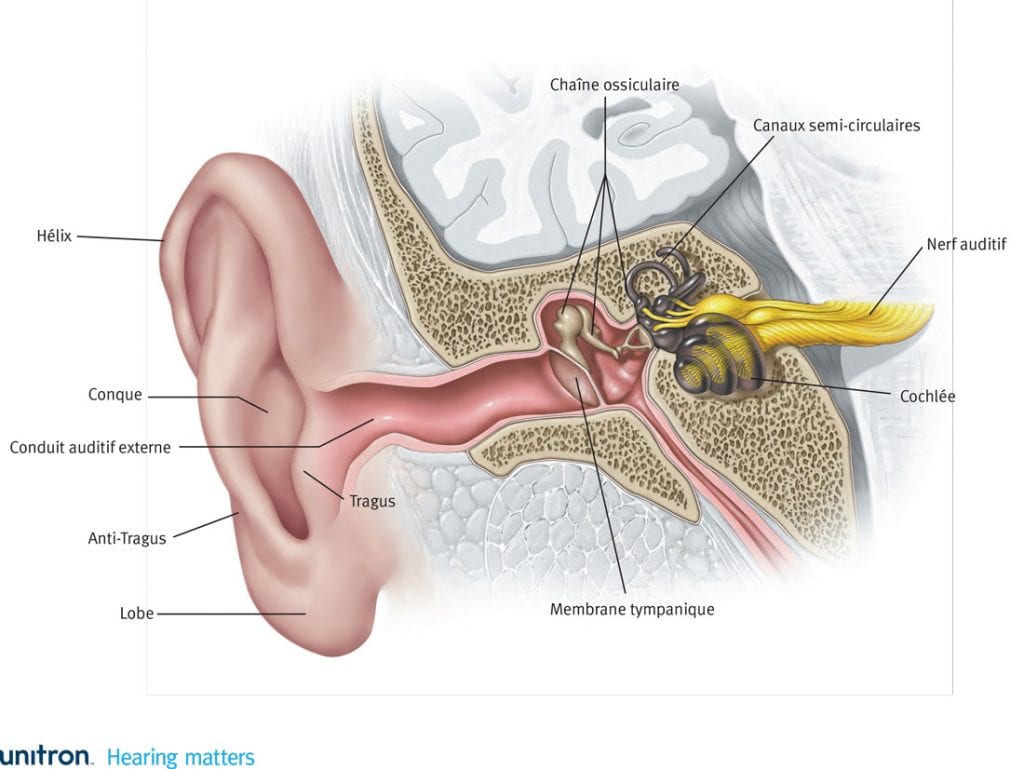The ear can be divided in 4 parts.
Outer ear
The outer (external) ear includes the pinna and the external ear canal. The pinna directs the sound to the ear canal. The external ear canal is dotted with hairs and has glands that produce earwax. Earwax helps to lubricate the skin, to keep it moist and to protect against infections.
Middle ear
The eardrum (tympanic membrane) is a membrane at the inner end of the external auditory canal which vibrates when sound is received. The ossicular chain (malleus, incus, and stapes) amplifies and transmits these vibrations to the inner ear.
Inner ear
The inner ear has two parts: one is responsible for hearing, and the other part is involved in the equilibrium function . The auditory part includes the cochlea and the auditory nerve. The cochlea is snail-shaped and is filled with liquid in which hair cells move. When the ossicular chain transmits a vibration to the hair cells, it creates an electrical signal.
Central auditory system
The central auditory system is made of nerve cells and some areas of the brain. It is responsible for the recognition of sound, the understanding of speech in noise and the analysis of complex sounds, such as music. Hearing impairment in the central auditory system may lead to a central auditory processing disorder (CAPD).

